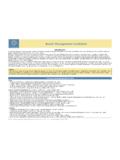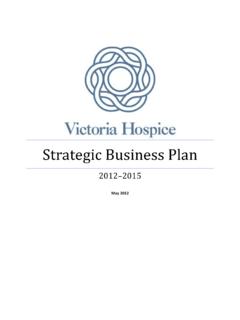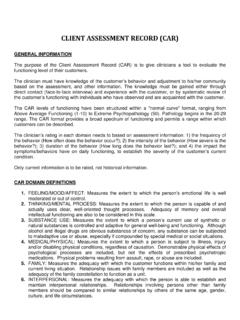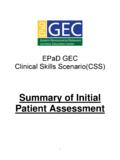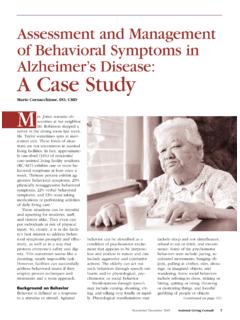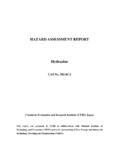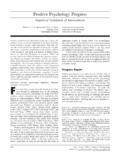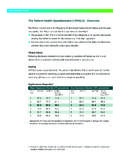Transcription of Victoria Hospice BRAT
1 assessment Date Assessed byID#Patient / Deceased NameBereaved NameCommentsI. Kinshipa) spouse/partner of patient or deceased b) parent/parental figure of patient or deceasedII Caregiver a) family member or friend who has taken primary responsibility for careIII. Mental Healtha) significant mental illness (eg major depression, schizophrenia, anxiety disorder)b) significant mental disability (eg developmental, dementia, stroke, head injury)IV. Copinga) substance abuse / addiction (specify)b) considered suicide (no plan, no previous attempt)c) has suicide plan and a means to carry it out OR has made previous attemptd) self-expressed concerns regarding own coping, now or in futuree) heightened emotional states (anger, guilt, anxiety) as typical response to stressorsf) yearning/pining for the deceased OR persistent disturbing thoughts/images > 3 months*g) declines available resources or supporth) inability to experience grief feelings or acknowledge reality of the death > 3 months*V.
2 Spirituality / Religion significant challenge to fundamental beliefs / loss of meaning or faith / spiritual distressVI. Concurrent Stressorsa) two or more competing demands (eg single parenting, work, other caregiving)b) insufficient financial, practical or physical resources (eg income, no childcare, illness)c) recent non-death losses (eg divorce, unemployment, moving, retirement)d) significant other with life-threatening illness / injury (other than patient/deceased)VII. Previous Bereavementsa) unresolved previous bereavement(s)b) death of other significant person within 1 year (from time of patient s death)c) cumulative grief from > 2 OTHER deaths over past 3 yearsd) death or loss of parent/parental figure during own childhood (less than age 19)VIII.
3 Supports & Relationshipsa) lack of social support/social isolation (perceived or real - eg housebound)b) cultural or language barriers to supportc) longstanding or current discordant relationship(s) within the familyd) relationship with patient/deceased (eg abuse, dependency)IX. Children & Youtha) death of parent, parental figure or sibling*b) demonstration of extreme, ongoing behaviours/symptoms (eg sep anxiety+, nightmares)c) parent expresses concern regarding his/her ability to support child s griefd) parent/parental figure significantly compromised by his/her own griefX. Circumstances Involving the Patient, the Care or the Deatha) patient/deceased less than age 35b) lack of preparedness for the death (as perceived or demonstrated by bereaved)*c) distress witnessing the death OR death perceived as preventable*d) violent, traumatic OR unexplained death (eg accident, suicide, unknown cause)*e) significant anger with OTHER health care providers (eg my GP missed the diagnosis )f) significant anger with OUR Hospice palliative care program (eg you killed my wife )XI.
4 Protective Factors Supporting Positive Bereavement Outcomea)b)c)d)Aug-08perceives AND is willing to access strong social support network predisposed to high level of optimism/positive state of mindspiritual/religious beliefs that assist in coping with the death Bereavement Risk assessment Tool Victoria Hospice Society 2008internalized belief in own ability to cope effectivelyRisk Indicators and Protective Factors
